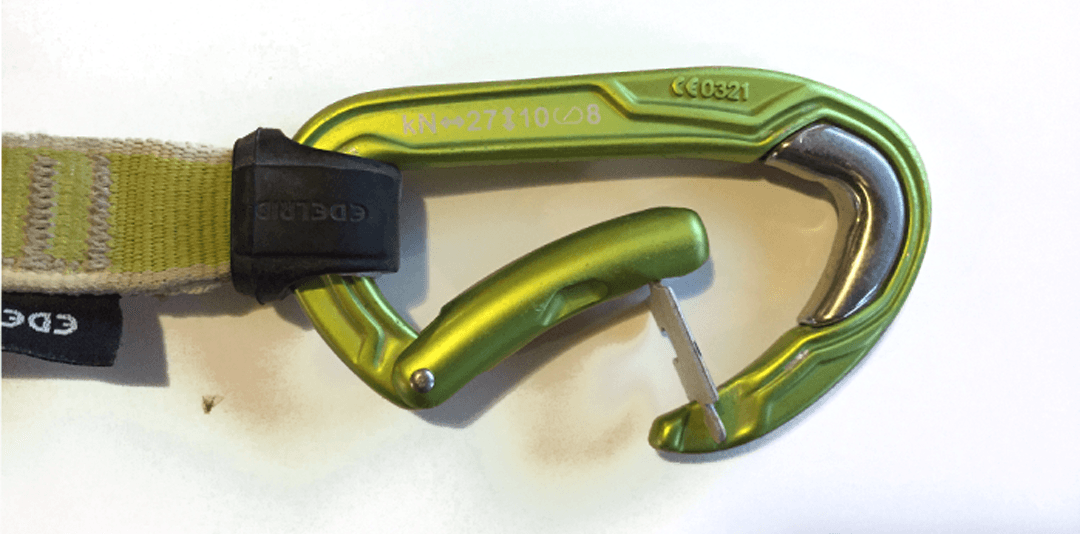

- #EDELRID BULLETPROOF QUICKDRAW FULL#
- #EDELRID BULLETPROOF QUICKDRAW TRIAL#
- #EDELRID BULLETPROOF QUICKDRAW SERIES#
Allain created his carabiners in the “D” shape, an improvement for its weight and strength. The initial carabiners were forged into ovals. Steel carabiners, despite their weight, still have modern applications in gyms and as fixed anchors, since they are more durable. Today’s versions are mostly made with an alloy of aluminum, which is lightweight and pliable, and zinc, which adds strength.

In the 1950s, French alpinist Pierre Allain created the first aluminum varieties.
#EDELRID BULLETPROOF QUICKDRAW SERIES#
The minor axis and the gate open standards were determined after a series of field accidents where carabiners were failing at 6kN. Engineers did engineering things to determine that the belay side should withstand 8kN, so that’s 20kN in total.
#EDELRID BULLETPROOF QUICKDRAW TRIAL#
Those numbers came about via a little trial and error and the German military, who discovered that parachuters jumping out of planes could withstand 12kN in a full-body harness. To meet modern standards, carabiners must be rated at least 20kN along the major axis and 7kN along the minor axis and the major axis when the gate is open. While atypical, climbers do occasionally fall when a gate is slightly open, sometimes due to a protruding rock feature. This number will resemble the minor axis rating or may even be slightly less. The last number (9.5kN again) is the force the carabiner can withstand while the gate is pushed open, but still hanging along its major axis. They are still rated, however, to withstand climbers’ biggest whips. This number (10kN in the above carabiner) will often be one third of the first number because carabiners are not meant to be turned horizontally when the climber falls. the force it can withstand along the “minor axis”-climbers call this cross-loading. The next number indicates the carabiner’s perpendicular force rating, i.e. The first number (23kN in the above example), which sits next to the arrow that would imaginarily run straight across the letters and numbers, indicates the kilonewtons the carabiner can take if the force is parallel to the spine, or along its “major axis.” This is the intended direction of force for carabiners and, accordingly, has the strongest rating. Following those acronyms, all carabiners will have a set of three numbers indicating the kilonewtons of force the carabiner is rated to handle. The first thing to look for on your carabiner are the acronyms CE or UIAA, both of which will tell you that the carabiner has been tested and deemed safe for climbing. But there are still major differences in functionality and purpose. Is it best to go for a beefy sling or a thin one? A wire gate or a solid one? And what the heck is a Screamer!?Īs long as you’re buying from reputable sources, all quickdraws are plenty strong to catch your falls. Everything from the shape, nose type and angle, and gate style varies from one carabiner to the next. But take a look in any gear shop and you’ll notice you have choices. Modern quickdraws are simple, game-changing devices. In 1972, he tied off nine inches of 5/8” webbing to two carabiners and called his creation “UrQuickdraws.” According to John Bachar, the Stonemasters called that “carabiner climbing,” and Colorado legend Jim Erickson decided it was cumbersome. And the quickdraw? That came when climbers stopped clipping one carabiner into another carabiner into a bolt. Since that first one, subsequent iterations over the last 100-plus years have produced our modern and beloved carabiner. Copying the gadget, he produced the first climbing carabiner, a simple steel loop with a spring-loaded gate. Rambo, crafty German that he was, took notes from a piece of equipment used by the Munich firefighters. “Rambo,” climbers in the early 1900s could attach rope to rock by tying and untying slings around the rope and protection, which was pitons or a rock horn. Sure, those draws come in neon pink and they match your harness, but why are they that shape and size, and does it matter?
#EDELRID BULLETPROOF QUICKDRAW FULL#
Get full access to Outside Learn, our online education hub featuring in-depth fitness, nutrition, and adventure courses and more than 2,000 instructional videos when you sign up for Outside+


 0 kommentar(er)
0 kommentar(er)
